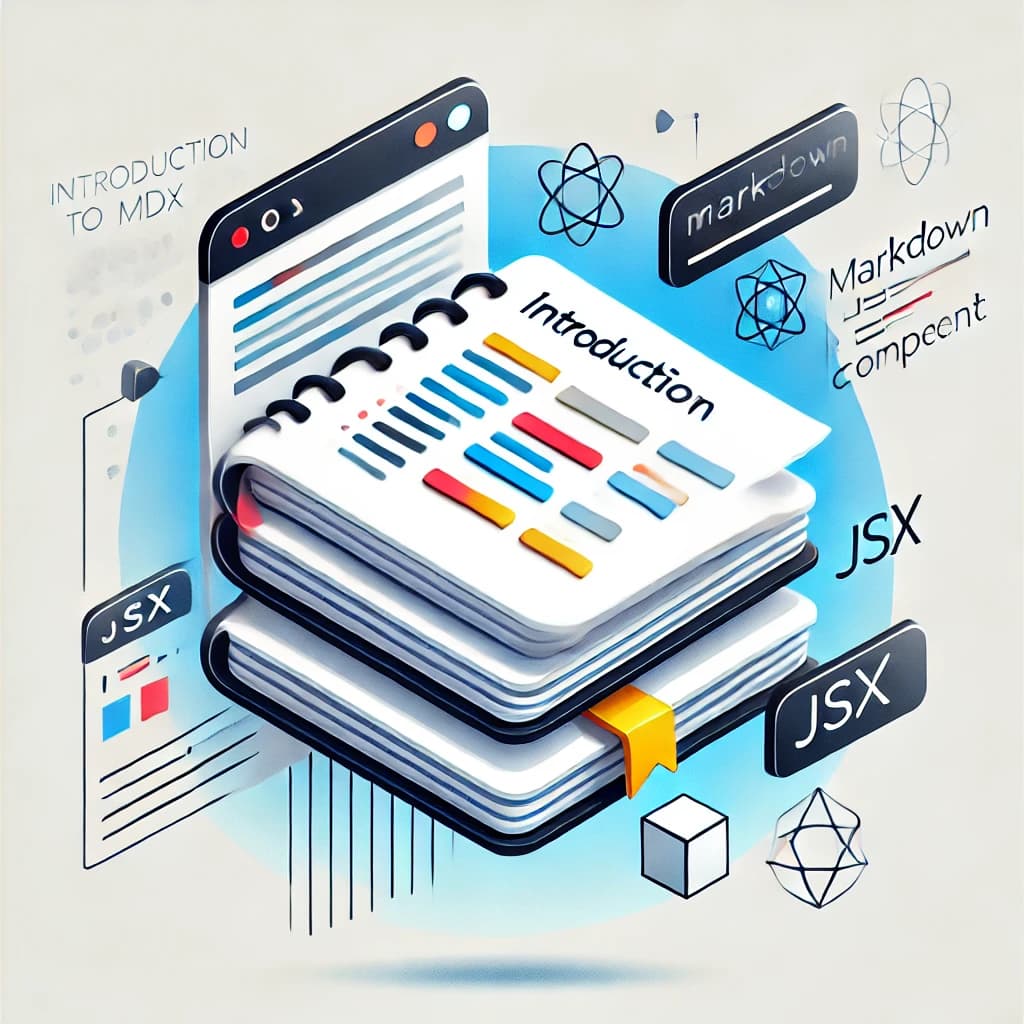

September 20, 2024 • 4 min read
Introduction to MDX - The Future of Content Creation
MDX represents a revolutionary approach to content creation, combining the simplicity of Markdown with the power of JSX. In this comprehensive guide, we'll explore how MDX can transform your content creation workflow and enable you to build more interactive and engaging documentation.
What is MDX?
MDX (Markdown for the Component Era) is a powerful format that extends traditional Markdown by allowing you to seamlessly use JSX in your content. Think of it as a perfect marriage between Markdown's simplicity and React's component-based architecture.
Key Features of MDX:
- Component Import: Import and use React components directly in your Markdown
- JSX Support: Write inline JSX anywhere in your documents
- Markdown Compatibility: Use all standard Markdown syntax
- Expression Evaluation: Execute JavaScript expressions within your content
- Plugin System: Extend functionality through a robust plugin ecosystem
Why Choose MDX?
The benefits of using MDX extend far beyond simple content creation. Here's why you might want to consider MDX for your next project:
1. Enhanced Documentation
Traditional documentation can be limiting when you need to showcase interactive examples. With MDX, you can:
import { Demo } from '../components/Demo'
# Interactive Component Demo
Here's how our new button component works:
<Demo>
<Button onClick={() => alert('Clicked!')}>
Click me!
</Button>
</Demo>
2. Dynamic Content Generation
MDX allows you to leverage JavaScript's power to generate dynamic content:
export const metadata = {
authors: ['Jatin', 'Sarah', 'Michael'],
date: new Date('2024-09-20')
}
# Team Contributors
{metadata.authors.map(author => (
<AuthorCard key={author} name={author} />
))}3. Reusable Components
Create consistent content elements across your documentation:
import { Callout } from '../components/Callout'
<Callout type="info">
This is a reusable callout component that can be used across all your MDX files!
</Callout>Getting Started with MDX
Installation
To start using MDX in your project, you'll need to install the necessary dependencies:
# For Next.js
npm install @next/mdx @mdx-js/loader @mdx-js/react
# For Gatsby
npm install gatsby-plugin-mdx @mdx-js/mdx @mdx-js/reactConfiguration
Here's a basic configuration for Next.js:
// next.config.js
const withMDX = require('@next/mdx')({
extension: /\.mdx?$/,
options: {
remarkPlugins: [],
rehypePlugins: [],
},
})
module.exports = withMDX({
pageExtensions: ['js', 'jsx', 'md', 'mdx']
})Advanced MDX Techniques
1. Custom Components
MDX allows you to map HTML elements to custom components:
// components/MDXComponents.js
const MDXComponents = {
h1: props => <h1 className="text-3xl font-bold" {...props} />,
h2: props => <h2 className="text-2xl font-semibold" {...props} />,
code: props => <CodeBlock {...props} />
}
// pages/_app.js
import { MDXProvider } from '@mdx-js/react'
function MyApp({ Component, pageProps }) {
return (
<MDXProvider components={MDXComponents}>
<Component {...pageProps} />
</MDXProvider>
)
}2. Working with Frontmatter
MDX supports frontmatter for metadata:
---
title: My Amazing Post
date: '2024-09-20'
tags: ['mdx', 'react']
---
export const metadata = {...frontmatter}
# {metadata.title}
Published on {new Date(metadata.date).toLocaleDateString()}3. Layout Components
Wrap your MDX content in custom layouts:
import BlogLayout from '../layouts/BlogLayout'
export default function MDXLayout({ children }) {
return <BlogLayout>{children}</BlogLayout>
}
# My Blog Post ContentBest Practices and Tips
-
Component Organization
- Keep reusable components in a dedicated directory
- Use a consistent naming convention
- Document component props thoroughly
-
Performance Considerations
- Lazy load heavy components
- Optimize images and media content
- Use appropriate caching strategies
-
Accessibility
- Ensure custom components maintain proper accessibility
- Include proper ARIA labels and roles
- Test with screen readers
Common Pitfalls and Solutions
1. Syntax Highlighting
To enable syntax highlighting in code blocks:
import { Prism as SyntaxHighlighter } from 'react-syntax-highlighter'
const CodeBlock = ({ className, children }) => {
const language = className?.replace(/language-/, '')
return (
<SyntaxHighlighter language={language}>
{children}
</SyntaxHighlighter>
)
}2. Image Handling
Optimize image handling in MDX:
import Image from 'next/image'
# My Blog Post
<Image
src="/path/to/image.jpg"
alt="Description"
width={800}
height={400}
priority
/>Tools and Resources
-
MDX Editors
-
Useful Libraries
remark-gfmfor GitHub Flavored Markdownrehype-prismfor syntax highlightingremark-tocfor automatic table of contents
-
Learning Resources
Conclusion
MDX represents a significant evolution in content creation, offering a perfect blend of Markdown's simplicity and React's component-based architecture. By leveraging MDX, you can create more engaging, interactive, and maintainable content while keeping the familiar workflow of Markdown.
Whether you're building documentation, blogs, or interactive tutorials, MDX provides the tools you need to create exceptional content experiences. As the ecosystem continues to grow, we can expect even more exciting possibilities for content creation with MDX.
Next Steps
- Experiment with MDX in a small project
- Explore the plugin ecosystem
- Join the MDX community on GitHub
- Share your MDX experiments and learnings
Remember, the best way to learn MDX is through hands-on practice. Start small, experiment with different components and features, and gradually build up to more complex implementations.